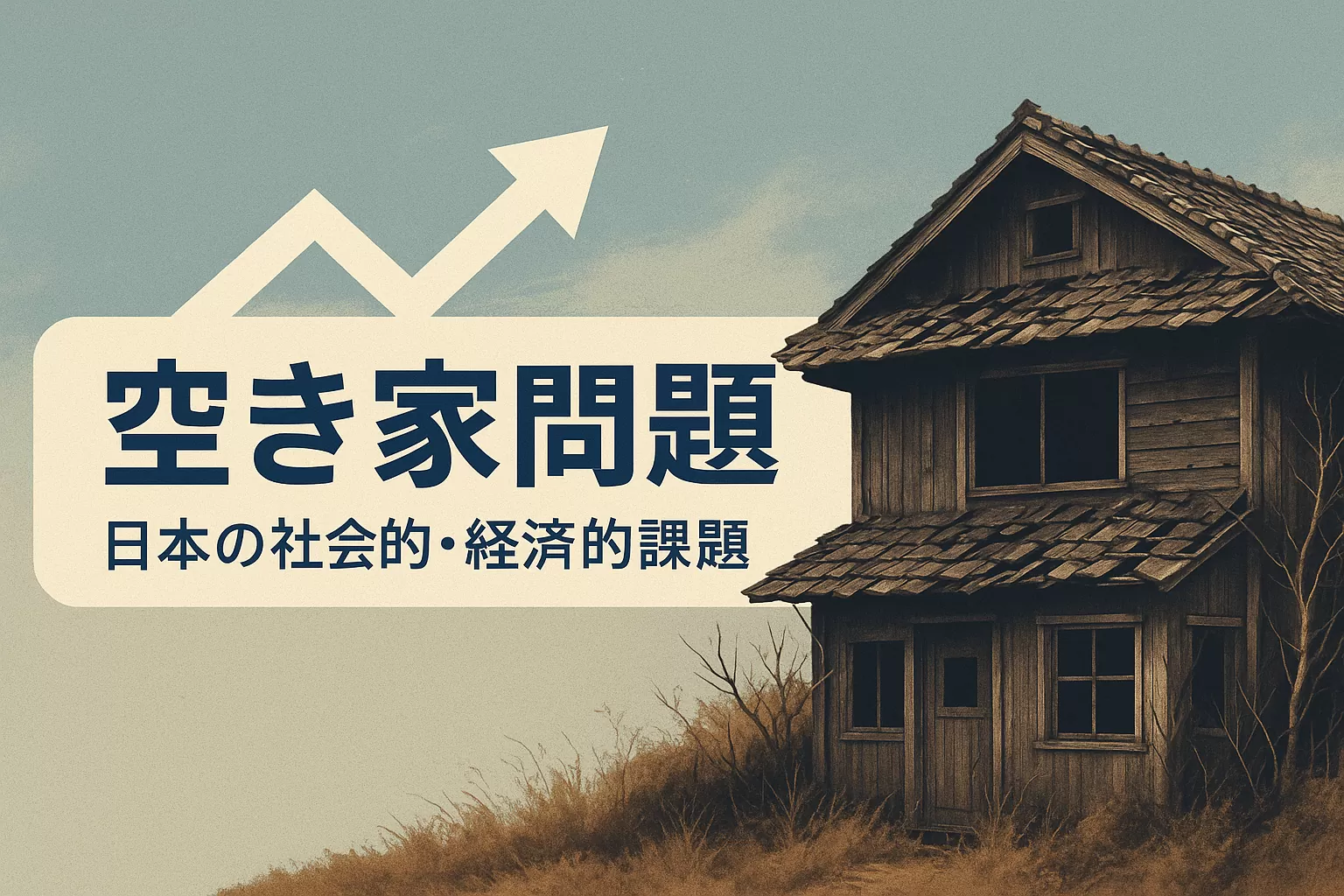Across Japan, the vacant housing problem has become increasingly serious. Below, we summarize its causes, social and economic impacts, and the necessary countermeasures.
Causes of the Vacant Housing Problem
- Demographic Changes
Japan is one of the fastest-aging countries in the world. Even when homes are inherited from elderly parents, the younger generation often lives elsewhere or already owns property in urban areas. As a result, these homes are left unused, deteriorating over time and adding to the growing stock of vacant houses. - Population Shift to Cities
Younger generations tend to relocate from rural areas to cities for work or education. Homes left behind in rural areas lose their occupants, fall into disrepair, and eventually become vacant. This trend is particularly pronounced in depopulated regions. - Economic Factors
Owning a house requires continuous expenses such as property taxes, repairs, and maintenance of gardens or exteriors. Once a house becomes vacant, it no longer generates income and becomes nothing but a burden for its owner. Furthermore, rural property markets are limited, making sales difficult and encouraging abandonment. - Inheritance and Legal Issues
Families often disagree on how to handle inherited properties—whether to demolish, sell, or repurpose them. Many of these discussions end without resolution, leaving the property in limbo. In addition, when inheritance registration is not completed, ownership rights become complicated due to an increasing number of heirs. This “unknown landowner problem” is one of the major reasons vacant homes are left untouched.
Social and Economic Impacts
- Decline in Property Values
Areas with many vacant homes suffer from falling land and property values. Even residents who properly maintain their homes see their assets lose value, which further accelerates regional economic decline. - Safety and Security Risks
Neglected houses become fire hazards and invite trespassing, illegal dumping, and pest infestations. They also create a sense of insecurity among local residents. - Environmental Impact
Beyond spoiling the scenery, old structures pose significant disaster risks. In a country prone to earthquakes and typhoons, vacant homes can collapse or scatter debris, endangering surrounding areas. - Financial Burden on Municipalities
Local governments are required to inspect, manage, or demolish hazardous vacant houses. These efforts demand significant funding, straining already limited municipal budgets.
Future Outlook and Required Measures
With ongoing population decline and aging, the number of vacant homes in Japan is expected to rise further. Without proper action, this issue will continue to severely affect Japan’s economy and community life. Key measures include:
- Expansion of National and Local Support: Subsidies for demolition or renovation, simplification of inheritance procedures, and revitalization of “Akiya Banks.”
- Utilization by Local Communities: Converting vacant homes into childcare centers, community spaces, or other local facilities.
- Private Sector and Investor Involvement: Promoting renovation projects, guesthouses, co-working spaces, and other innovative business models.
- Raising Owner Awareness: Public education on the risks and responsibilities of leaving homes abandoned, encouraging early decisions on use, sale, or demolition.
Conclusion
The vacant housing issue is not just a matter of individual property ownership, but a serious social challenge that impacts community safety, the economy, and overall quality of life. As Japan continues to face population decline, building systems to proactively utilize, demolish, or regenerate vacant houses is an urgent necessity.

